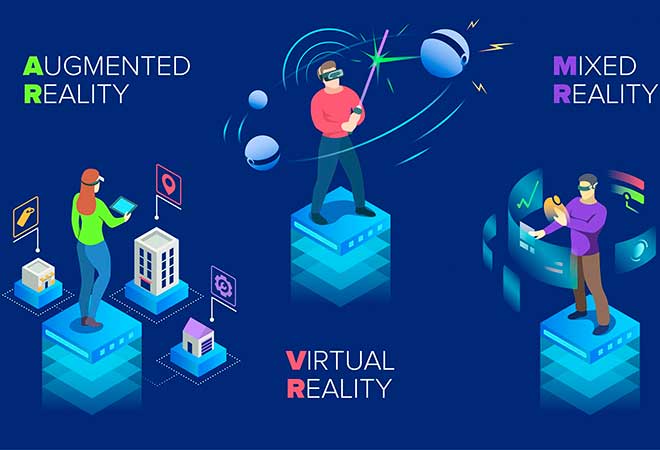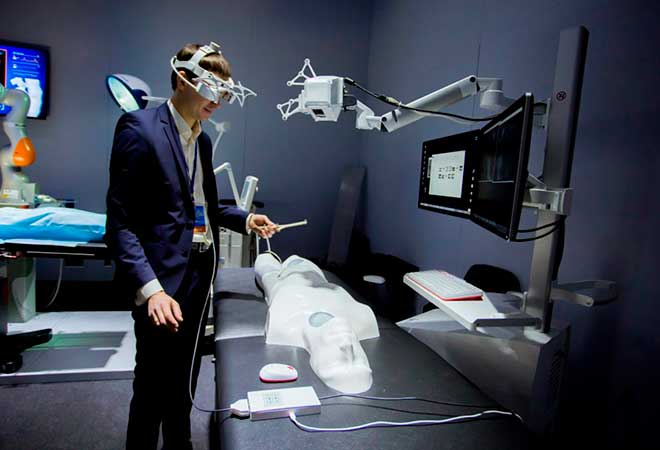In recent years, virtual reality (VR) technology has begun to revolutionize the healthcare industry, offering innovative solutions that improve patient care, enhance medical training, and streamline procedures. From pain management to surgical simulations, VR medical applications are paving the way for a new era of healthcare delivery.
One of the most significant advancements in VR medical applications is its role in pain management and therapy. VR experiences have been shown to distract patients from pain, reduce anxiety during procedures, and improve overall comfort levels. By immersing patients in calming virtual environments or engaging interactive experiences, VR helps alleviate discomfort and promote relaxation, offering a drug-free alternative to traditional pain management techniques.
Moreover, VR is transforming medical training and education by providing immersive simulations that replicate real-world scenarios. Medical students and professionals can practice surgical procedures, diagnose conditions, and interact with virtual patients in a risk-free environment, allowing them to gain valuable hands-on experience without putting patients at risk. With VR, healthcare providers can hone their skills, improve clinical decision-making, and stay up-to-date with the latest advancements in medicine.
In addition to training, VR is also being used for patient education and rehabilitation. By providing immersive educational experiences, patients can learn about their conditions, treatment options, and self-care techniques in a more engaging and interactive way. Furthermore, VR-based rehabilitation programs allow patients to perform therapeutic exercises and activities in virtual environments, promoting physical recovery and improving functional outcomes.
Another area where VR is making a significant impact is in mental health treatment. Virtual reality exposure therapy (VRET) has shown promising results in treating phobias, post-traumatic stress disorder (PTSD), and other anxiety-related disorders by exposing patients to controlled virtual environments that trigger their symptoms. By gradually exposing patients to feared stimuli in a safe and controlled manner, VR therapy helps desensitize them to their triggers and reduce symptoms over time.
As VR technology continues to advance, so too will its applications in healthcare. From remote consultations and telemedicine to personalized treatment plans and medical research, the possibilities are endless. By harnessing the power of VR, healthcare providers can improve patient outcomes, enhance medical training, and revolutionize the delivery of care, ushering in a new era of innovation and discovery in the field of medicine.
In recent years, virtual reality (VR) technology has emerged as a game-changer in the travel industry, offering immersive experiences that allow users to explore destinations from the comfort of their own homes. From exotic beaches to bustling city streets, VR is transforming the way we perceive and engage with travel, opening up a world of possibilities for adventurers and armchair travelers alike.
One of the most significant impacts of VR on travel is its ability to provide realistic simulations of destinations, allowing users to virtually visit places they may never have the opportunity to see in person. Through VR travel experiences, individuals can immerse themselves in iconic landmarks, natural wonders, and cultural attractions with stunning visual fidelity and spatial audio, providing a sense of presence and immersion that transcends traditional travel media.
Moreover, VR travel experiences go beyond mere sightseeing by offering interactive elements that enable users to engage with their surroundings in meaningful ways. Whether it's interacting with local wildlife, participating in virtual tours led by knowledgeable guides, or experiencing cultural performances firsthand, VR allows travelers to connect with destinations on a deeper level, fostering empathy, understanding, and appreciation for diverse cultures and environments.
For travelers with mobility issues or limited resources, VR offers a lifeline to explore the world in ways that were previously inaccessible. By democratizing travel and breaking down physical barriers, VR technology ensures that everyone, regardless of their circumstances, can experience the joy of discovery and exploration.
Additionally, VR serves as a powerful tool for travel planning and decision-making, allowing users to preview accommodations, attractions, and activities before making reservations. By providing realistic previews of destinations and experiences, VR helps travelers make informed choices and tailor their itineraries to suit their preferences and interests.
As VR technology continues to evolve, so too will its impact on the travel industry. From virtual guided tours of archaeological sites to immersive storytelling experiences that bring destinations to life, the possibilities are endless. Whether used as a supplement to traditional travel or as a standalone alternative, VR has the potential to revolutionize the way we experience the world, offering endless virtual escapes to destinations near and far.
While virtual reality (VR) technology has long been associated with immersive gaming experiences, its impact extends far beyond entertainment into the realms of education and training. VR is revolutionizing the way we learn and develop skills by providing realistic, interactive, and engaging environments that enhance comprehension and retention.
In education, VR offers unprecedented opportunities for experiential learning. Students can embark on virtual field trips to historical sites, explore the human body in 3D, or conduct virtual science experiments in a safe and controlled environment. These immersive experiences not only make learning more engaging but also cater to different learning styles, allowing students to grasp complex concepts more effectively.
Moreover, VR enables educators to overcome geographical barriers by connecting students from around the world in shared virtual classrooms. Through collaborative VR experiences, students can work together on group projects, participate in discussions, and even attend lectures delivered by experts from remote locations. This fosters a sense of global citizenship and cultural exchange, enriching the learning experience.
In the realm of workforce training, VR offers a cost-effective and risk-free way to prepare employees for real-world scenarios. From flight simulators for pilots to virtual mock-ups for surgeons, VR simulations allow professionals to hone their skills in lifelike environments without putting themselves or others in danger. This hands-on training approach not only improves performance but also boosts confidence and reduces the time required for on-the-job training.
Furthermore, VR is transforming industries such as manufacturing, where complex machinery and processes can be simulated in virtual environments for training purposes. Employees can familiarize themselves with equipment operation, safety protocols, and troubleshooting procedures before setting foot on the factory floor, leading to increased efficiency and reduced downtime.
Overall, VR's impact on education and training is profound and multifaceted. By providing immersive, interactive, and accessible learning experiences, VR is empowering individuals of all ages and backgrounds to acquire knowledge, develop skills, and unlock their full potential in ways previously unimaginable. As the technology continues to evolve, its role in shaping the future of education and training will only become more prominent.
Virtual reality (VR) technology is not just a novelty; it's a revolutionary force reshaping industries across the board. From entertainment to healthcare, education to manufacturing, VR is transforming the way we work, play, and interact with the world around us.
In the entertainment industry, VR has opened up new possibilities for immersive experiences. Gone are the days of passive entertainment; now, audiences can step into the action and become part of the story. Whether it's exploring virtual worlds, attending live concerts in VR, or experiencing interactive storytelling, the entertainment landscape has been forever changed by the introduction of VR technology.
But the impact of VR extends far beyond entertainment. In healthcare, VR is revolutionizing patient care and medical training. Surgeons can now practice complex procedures in virtual environments, reducing the risk for real patients and improving surgical outcomes. Patients suffering from chronic pain or anxiety can find relief through VR-based therapies, offering a non-invasive and drug-free alternative to traditional treatments.
In education, VR is breaking down barriers to learning and opening up new avenues for exploration. Students can travel back in time to explore ancient civilizations, dive deep into the ocean to study marine life, or even journey into space to explore the cosmos—all from the comfort of their classroom. VR technology is making learning more engaging, interactive, and accessible than ever before.
Even in manufacturing and industry, VR is making waves. Engineers can design and prototype products in virtual environments, streamlining the production process and reducing costs. Workers can undergo virtual training simulations to learn new skills or practice hazardous tasks in a safe and controlled environment, improving workplace safety and efficiency.
As VR technology continues to evolve and become more widespread, the possibilities are endless. From enhancing remote collaboration to revolutionizing customer experiences, VR has the power to reshape industries in ways we've only begun to imagine. The VR revolution is here, and it's only just getting started.
Virtual reality (VR) technology has rapidly evolved in recent years, transforming the way we interact with digital environments and revolutionizing various industries. In this era of constant innovation, the latest VR advancements continue to push the boundaries of what is possible, offering exciting new possibilities for entertainment, education, healthcare, and more.
One of the most significant developments in VR technology is the improvement in hardware, with companies like Oculus, HTC, and Sony releasing cutting-edge VR headsets that offer immersive experiences like never before. These headsets feature high-resolution displays, advanced motion tracking sensors, and ergonomic designs, allowing users to feel fully immersed in virtual worlds.
In addition to hardware improvements, developers are continuously creating innovative software applications that leverage the capabilities of VR technology. From realistic gaming experiences to interactive educational simulations, the range of VR content available to users is vast and diverse. For example, medical professionals can now practice surgical procedures in virtual operating rooms, students can explore ancient civilizations through immersive history lessons, and travelers can visit exotic destinations without leaving their homes.
Moreover, VR technology is not limited to entertainment and education; it also has practical applications in various industries. Architects and engineers use VR simulations to visualize building designs and identify potential flaws before construction begins. Similarly, military personnel use VR training programs to simulate combat scenarios and improve decision-making skills in high-pressure situations.
Looking ahead, the future of VR technology is incredibly promising, with ongoing research and development focused on further enhancing immersion, increasing accessibility, and expanding the range of applications. As VR continues to evolve, it will undoubtedly play an increasingly significant role in shaping the way we live, work, and interact with the digital world.
In conclusion, the latest VR innovations represent a significant milestone in the evolution of technology, offering endless possibilities for exploration and discovery. Whether used for entertainment, education, or professional purposes, VR has the potential to transform our lives in profound and exciting ways, opening up new frontiers of experience and imagination.

Virtual, augmented, and mixed reality - what are we talking about? Video games, apps, marketing tools... New virtual simulation technologies are on everyone's lips today, and their applications seem to know no boundaries. And yet, when it comes to the distinction between virtual, augmented, and mixed reality, well... let's be honest, we're not so sure about that question.

From training sessions for medical students to eye diagnostics for patients, virtual reality (VR) and augmented reality (AR) glasses are no longer a rarity in medicine. Health authorities are increasingly giving the go-ahead for various new application areas for the glasses, and investors are also showing interest in the new market. Between 2021 and 2026, it is expected to grow by 35% annually and thus swell to more than US$40 billion by the end of this period. But to what extent can VR glasses be used in medicine?

Virtual reality is already being used in many industries. VR technology makes it possible to simulate surgeries and virtually work with patients' fears. More and more new applications are finding VR and AR in medicine, and we can look forward to how they will affect our healthcare system in the future. Could virtual reality revolutionize medicine? Will our visit to the doctor or hospital stay look completely different shortly than today?
